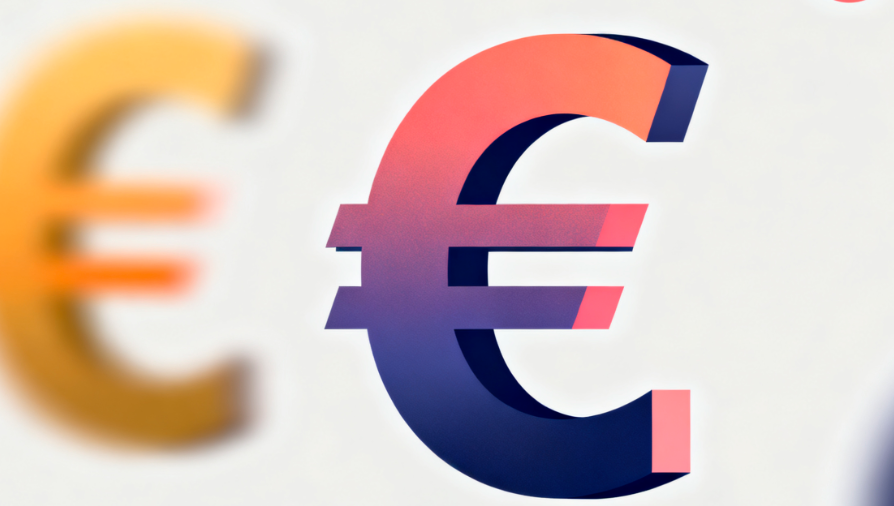
If we categorize by "1.0/2.0/3.0" generations, RWA (Real World Asset) tokenization should have already passed through two phases.
The 1.0 era was about "on-chain non-standardized assets," such as tokenized real estate and gold. The 2.0 era was about "on-chain interest rate products," such as the yield stablecoins/tokenized U.S. Treasury bill funds (T-Bills) that emerged in the last cycle.
The 3.0 era, however, is about "tokenization of structured financial products" and even more diverse integrations of TradFi and Crypto. The most disruptive hallmark of this era is the practice of stock tokenization/ETF tokenization, meaning the core, most complex structured assets from traditional capital markets are entering the on-chain world.
Crypto + TradFi = RWA 3.0
The process of Crypto landing in Traditional Finance (TradFi) is the prerequisite for RWA 3.0 to occur.
Therefore, this transformation should actually be traced back to 2024 when the U.S. Securities and Exchange Commission (SEC) formally approved the listing of spot Bitcoin ETFs. This quickly spread to the approval of Ethereum (ETH) ETFs, and further to more crypto assets like Solana and even Doge. Crypto's status as a "tradable asset" was ultimately confirmed within the traditional financial system.
The biggest variable brought by this premise is undoubtedly the influx of institutional liquidity. It thoroughly addressed the compliance and custody concerns of large institutional investors and traditional funds, effectively introducing trillions of dollars in capital, transforming cryptocurrencies from "non-mainstream assets" into "tradable assets."
Of course, for those who previously only had exposure to traditional investments, it also meant a significant lowering of the investment barrier. They could now buy and sell cryptocurrencies just like stocks through familiar securities accounts, greatly reducing the entry threshold.
According to SoSoValue data, as of the time of writing, the total net asset value of Bitcoin spot ETFs is nearly $150 billion, with an ETF net asset ratio (percentage of market cap relative to Bitcoin's total market cap) reaching 6.81%, and a historical cumulative net inflow of $61.9 billion. From this perspective, the "ETF-ization" starting in 2024 has successfully completed the first step of Crypto "being accepted by TradFi."
RWA 3.0, however, is about to take the second step: enabling TradFi assets to possess "native crypto functionalities." The key focus here is the tokenization of U.S. stocks, which has been at the center of the narrative vortex this year:
Entities like Robinhood have successively announced support for U.S. stock trading on the blockchain and plan to launch their own public blockchains. Meanwhile, Kraken and others have listed tokenized trading pairs for U.S. stocks like AAPL, TSLA, and NVDA, sparking a wave of on-chain stock trading热潮 (Extended reading: "Behind the 'Stock Tokenization' Boom: The Evolution Roadmap of the Tokenization Narrative").
From traditional financial giants like BlackRock exploring the tokenization of ETFs, to Web3 protocols like Ondo Finance launching tokenized stocks/ETFs, these all signal that securities, the world's largest type of financial asset, are undergoing deep coupling with blockchain.
The core significance of this integration lies in the fact that it not only puts cryptocurrencies on the fast track of traditional finance (ETF listings) but is also endowing traditional stocks and ETFs with the superpowers of native crypto assets.
RWA 3.0: Crypto ETF → Crypto-Equity → Equity-Crypto
Essentially, moving RWA assets like U.S. stocks and gold onto the chain only completes the "digital packaging" of the assets, solving the issues of asset issuance and cross-regional transfer. However, if tokenized assets can only sit idle and circulate within wallets without being composably used, they lose the composability advantage of blockchain.
Therefore, the real disruption is not about what we can "buy" on-chain, but what new "species" and new玩法 (play/mechanisms) we can "create."
In short, the key to a diversified RWA landscape lies in application and liquidity (Extended reading: "Beyond Tokenization: The Final Stage of RWA Financialization Moving from On-Chain to Liquidity").
Objectively speaking, starting in 2024, from the financialization experiments of Crypto ETFs, to the structural innovation of "Crypto-Equity integration," and further to the reverse extension of "Equity-Crypto fusion," the imagination space for RWA is continuously expanding. However, Crypto ETFs and Crypto-Equity are merely packaging or pegging games in capital markets. Only starting from Crypto-Equity does it count as structural innovation redefining asset boundaries.
The so-called "Crypto-Equity integration" is not a simple mix-and-match, but a potential path to reshape asset classes under blockchain infrastructure. Specifically, mapping the shares and rights of traditional securities onto the value on the blockchain unleashes potential unmatched by traditional finance:
-
Hybrid Asset Portfolios: Composite products containing both stock tokens, ETF tokens, and mainstream crypto assets. For example, combining tech stocks + ETH into a tokenized composite asset, providing users with全新的 risk diversification and yield structures.
-
Equity Derivative Staking: This is one of the most disruptive application directions. Users can hold equity-type tokens and stake them in DeFi protocols, using them as collateral to obtain loans or participate in derivative trading, achieving dual efficiency enhancement for assets.
-
Cross-Border Liquidity Coupling: For instance, stock token markets can introduce DeFi liquidity mechanisms, connecting them with crypto assets via AMMs or order books, thereby bringing traditional finance liquidity into DeFi and breaking Wall Street's trading hour restrictions (enabling 7x24 hour trading).
This integration will促使 the deep intertwining of traditional finance's asset pricing mechanisms and crypto finance's liquidity mechanisms, bringing new capital curves and arbitrage opportunities. It can even be bluntly said that such a financial structure is almost impossible in the traditional system, but on the blockchain, it naturally possesses the conditions for realization, not only improving capital efficiency but also making assets "alive."
Therefore, RWA actually represents an "incremental capital narrative." It not only provides DeFi with more stable, low-correlation, high-quality collateral but also signifies the first real handshake between the blockchain world and the real-world financial system.
From a longer-term perspective, in the next decade, RWA may become the decisive turning point for Crypto moving towards the real economy and achieving mainstream adoption (Extended reading: "As Crypto Moves Towards 'External Circulation,' Why is RWA Web3's 'Historical Shuttle'?").
The New Landscape After the Integration of RWA and Wall Street
However, the landscape of RWA after further deep integration between Crypto and TradFi is not entirely optimistic.
It can be said that as Crypto assets gradually become "Wall Street-ized" and "institutionalized," their underlying logic is also undergoing profound changes. As shared by digital nomad Guo Yu (guoyu.eth), in a market dominated by institutional capital and compliant products, native Crypto assets no longer represent the excess returns of the wild early days, but rather a market with extremely high volatility yet diminishing marginal returns. The liquidity dividend begins to give way to structural opportunities.
This means that under the new RWA 3.0 landscape, TradFi assets like U.S. stocks will instead re-squeeze the space for native Crypto assets like on-chain Altcoins (Extended reading: "Retracement, Clearing, and Recovery: Revelations from the 4-Year Cycles of U.S. Stocks, A-Shares, and Crypto").
-
Shift in Asset Selection Logic: Investors shift from pursuing the liquidity premium of Alts to pursuing "verifiable, high-certainty" value.
-
Scarce Certainty: Compared to Alts, U.S. stocks offer higher certainty, information transparency, and institutional maturity. High-quality assets have smaller drawdowns and faster rebounds. Furthermore, because corporate profits are verifiable and policy cycles are predictable, the logic behind news can always be unearthed.
From an investment perspective, this certainty is precisely the most scarce value in the current liquidity environment.
And the significance of RWA 3.0 lies in introducing this scarce value of certainty into the Crypto ecosystem with the highest efficiency and composability.
Conclusion
The ultimate goal of RWA is to establish a unified, efficient, and barrier-free global financial infrastructure.
Tokenization, by breaking the boundaries between "coins" and "stocks," creates the next stage of financial LEGOs and is expected to accelerate this process. However, risks cannot be ignored—challenges such as regulation, liquidity, custody, and off-chain asset proof remain. The endgame of RWA 3.0 is still a long-term game.
The only certainty is that when financial certainty meets Crypto's openness, a disintermediated, globally interconnected capital order is expected to be reconstructed on-chain.
















